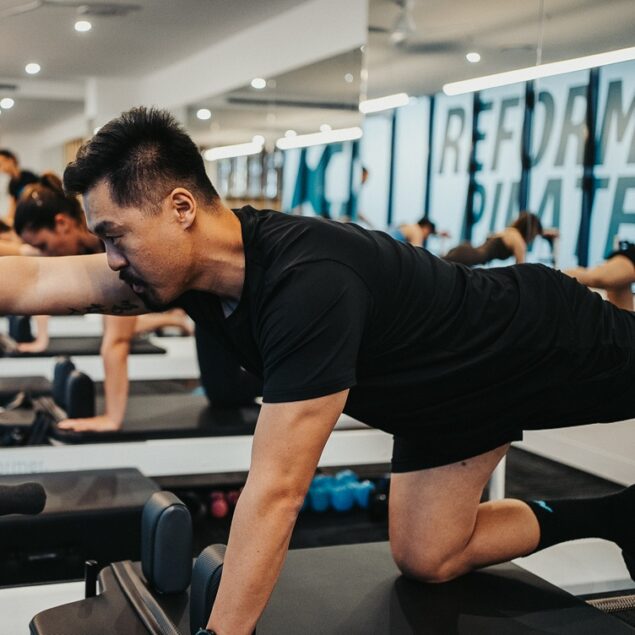
Embracing a career as a Pilates reformer trainer opens a world of opportunity — not just for you but for every student you teach. This role goes beyond teaching the exercises; it’s about guiding others toward a stronger, more confident version of themselves.
As a trainer, you can witness and foster remarkable transformations. Each session allows you to address both physical and mental challenges your students face, helping them build resilience with every move. For many Pilates practitioners, overcoming physical limitations enriches their sense of self-worth and promotes a positive mindset.
If you’re considering this career path, the first step is to enrol in a Pilates reformer training course. In this guide, we explore what Pilates reformer training involves and offer tips to advance your professional growth.
Enrolling in reformer Pilates courses sets you up for a successful career in fitness.
Here’s why you should undergo professional training:
Most reputable Pilates studios and fitness centres require instructors to have a formal certification. This certification ensures that you have met industry standards for safety and teaching proficiency. It also fosters credibility and confidence among potential clients who seek to receive the highest quality of instruction.
A professional Pilates reformer course goes in-depth into anatomy and physiology, teaching you how Pilates affects different parts of the body. This knowledge is crucial for creating safe and targeted exercise programs for all of your students, including those with injuries or physical limitations.
Pilates focuses heavily on the precision of movement and form. Reformer Pilates courses provide comprehensive instruction on how to perform and teach exercises correctly to maximise benefits and safety.
These programs emphasise techniques for clearly delivering instructions, demonstrating movements and offering corrections in a supportive way. Additionally, you’ll learn how to engage with students of various learning styles, making your Pilates reformer classes inclusive and adaptive.
Professional reformer Pilates courses teach you how to design a comprehensive program tailored to individual or group needs. This includes understanding how to sequence exercises, adjust for different levels and integrate various Pilates equipment.
Completing a Pilates reformer course can introduce rewarding job opportunities, including higher-paying positions at prestigious studios or the possibility of starting your own Pilates business. It also keeps you competitive in a growing field where clients and employers value specialised training and certification.
Certification courses challenge and expand your abilities, offering you the tools to inspire and lead others in their Pilates journeys. Here are some topics usually covered in a Pilates reformer course:
Master the core principles of Pilates which set the foundation for impactful sessions. These include:
The reformer is a versatile piece of equipment that can be adjusted to accommodate different body sizes and skill levels. Most Pilates reformer courses cover the following:
Pilates reformer exercises cover an array of movements aimed at boosting strength, flexibility, balance and overall body awareness. As an instructor, mastering techniques from basic to advanced levels is essential.
This mastery involves not only perfecting the proper form but also learning how to modify movements for beginners and experienced practitioners. Variations may involve adjusting the resistance on the reformer, altering the position of limbs or integrating additional equipment like bands or balls to keep classes fun and motivating.
A solid understanding of anatomy is key to maximising the benefits of Pilates. By learning which muscles are stretched and how each movement helps stabilise the body, you can prepare safer and more productive sessions.
For example, knowing the role of the transverse abdominis in core stability allows you to focus on activating this muscle during exercises like planks and leg pulls, enhancing the effectiveness of the workout.
Additionally, knowing how muscles and joints respond to stress over time lets you design progressive training programs that gradually increase in intensity. This ensures that students consistently see improvements in strength, flexibility and endurance, helping to prevent plateauing and overtraining.
Aspiring trainers learn to conduct initial assessments that include gathering detailed medical history and identifying fitness goals and health issues the student may have. This process is crucial, especially for adapting sessions to special groups such as injured people or pregnant women. It’s important to note that training for pre/postnatal clients requires additional specialised training to ensure safety and effectiveness.
Trainers also learn to conduct realistic goal setting and ongoing performance monitoring. This includes tracking relevant progress metrics and making necessary adjustments to the workout regimen.
Enrolling in a Pilates reformer training course is a gateway to a rewarding career in fitness and wellness. As you expand your skills and experience, you might take leadership roles or even open your own KX Pilates studio.
KX Pilates offers dynamic career advancement opportunities. As a KX Trainer, you can rise to become a Master Trainer, join the KX Training Department or even become a State Training Manager. Additionally, we provide support for studio management and ownership to help our trainers grow their professional careers.
Learn more about joining the KX Academy here.